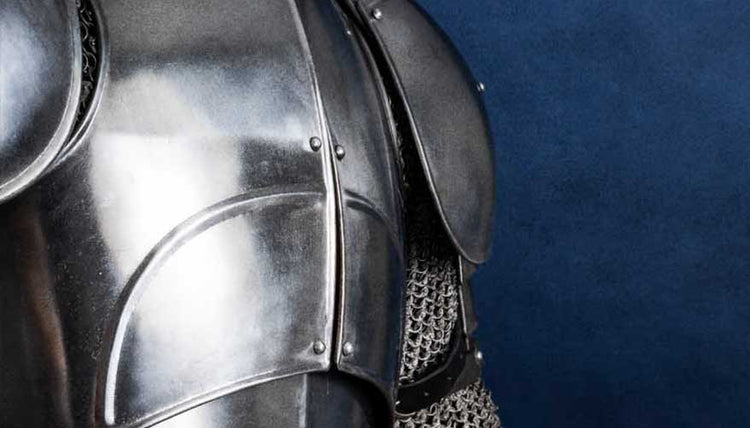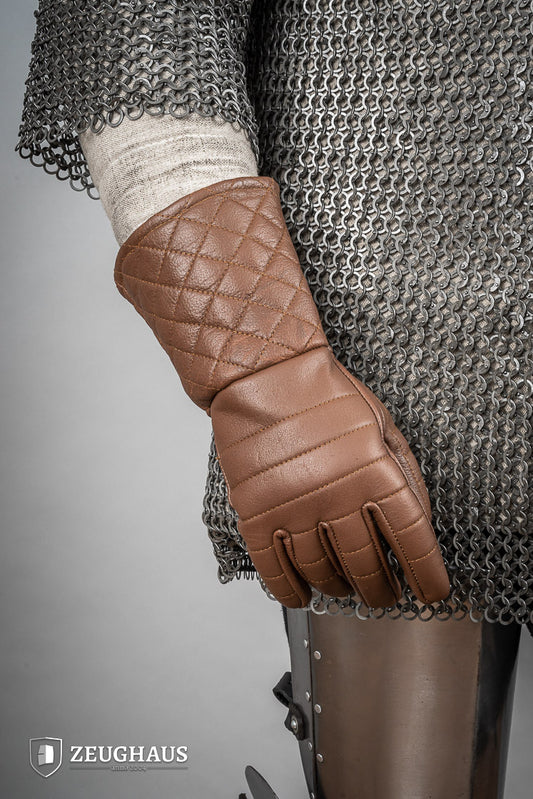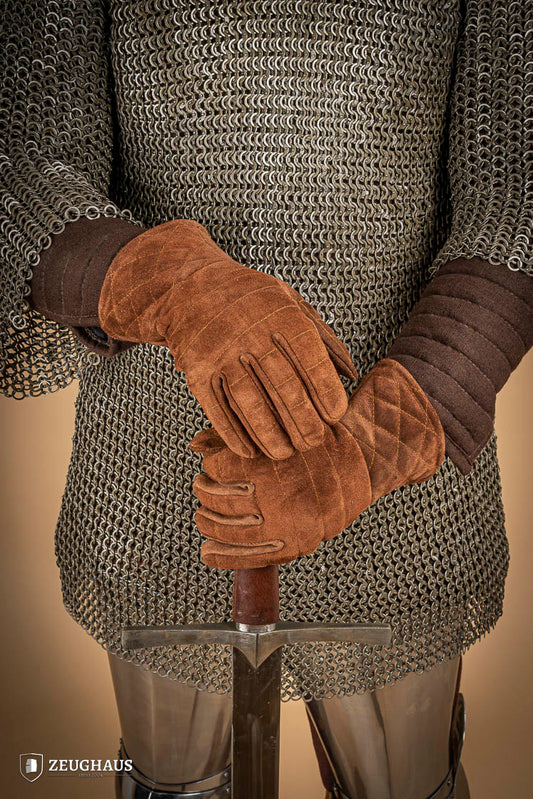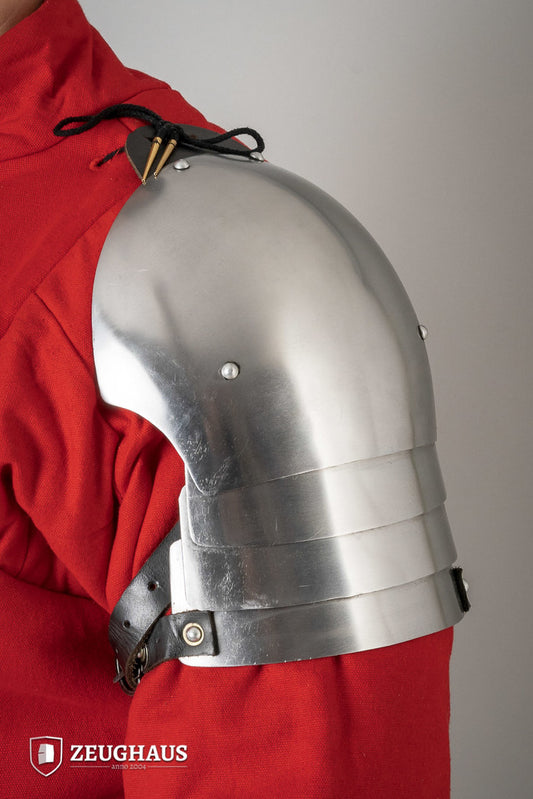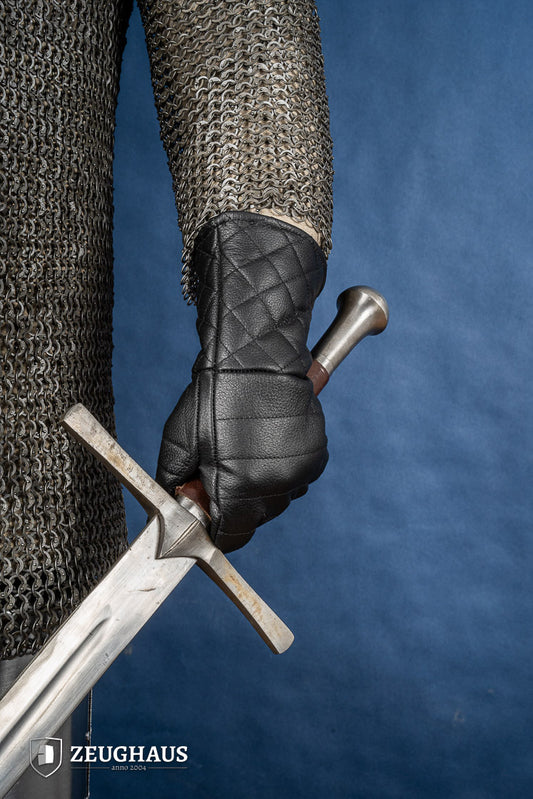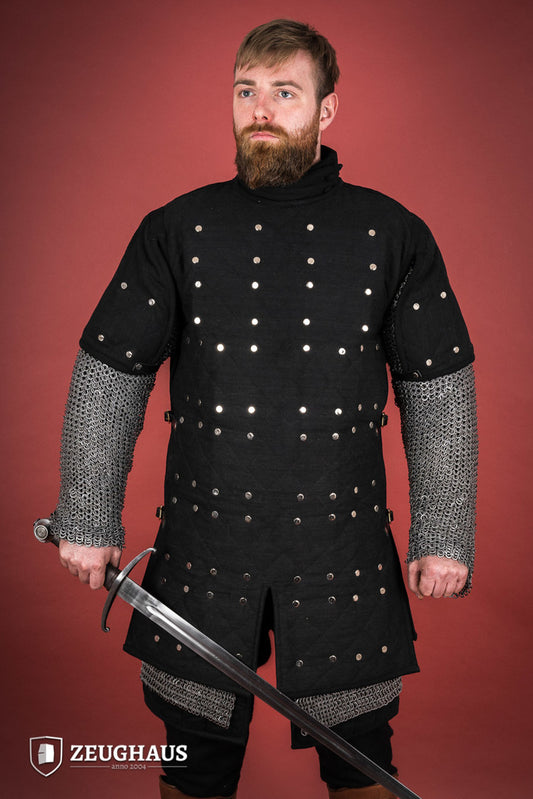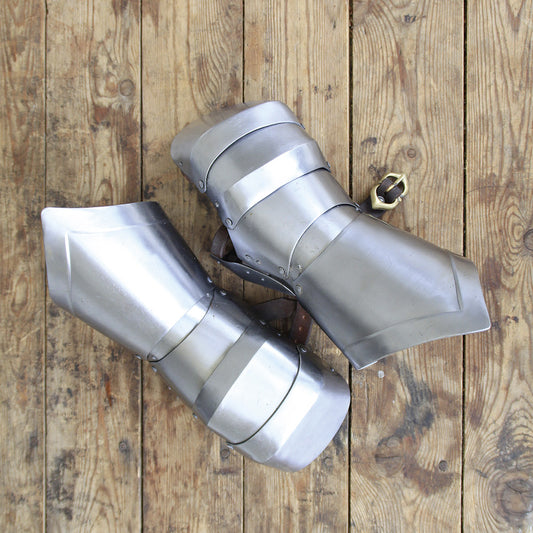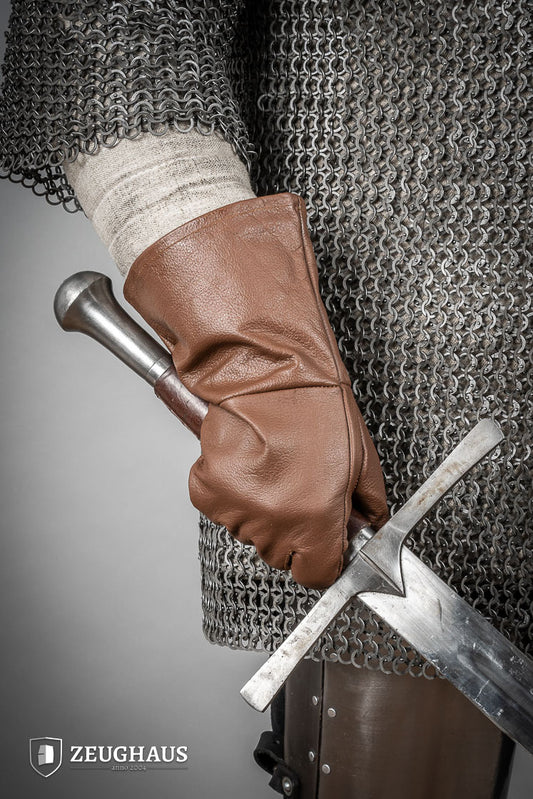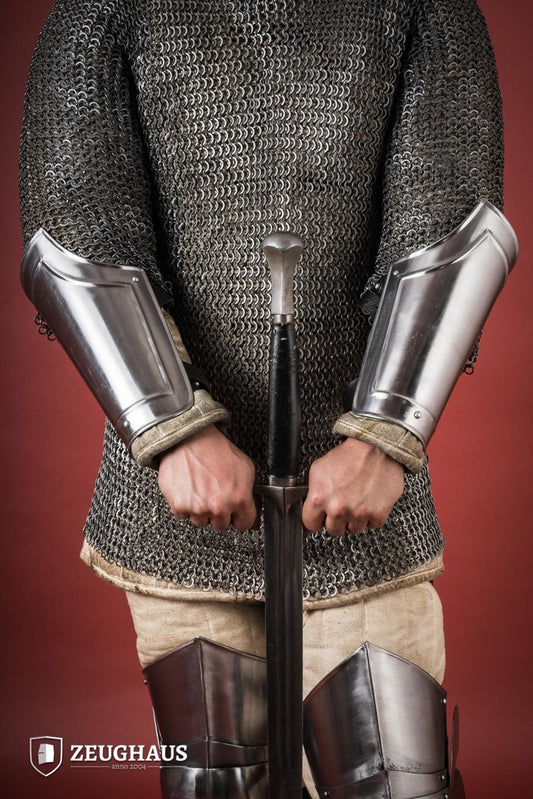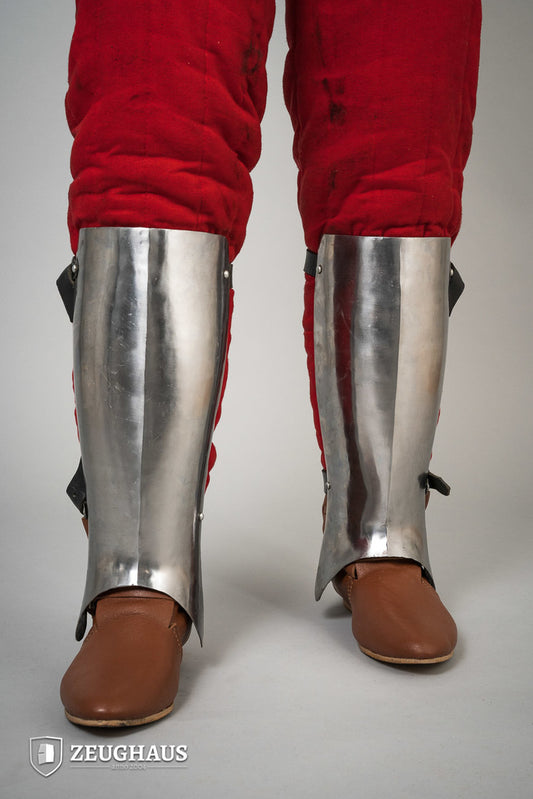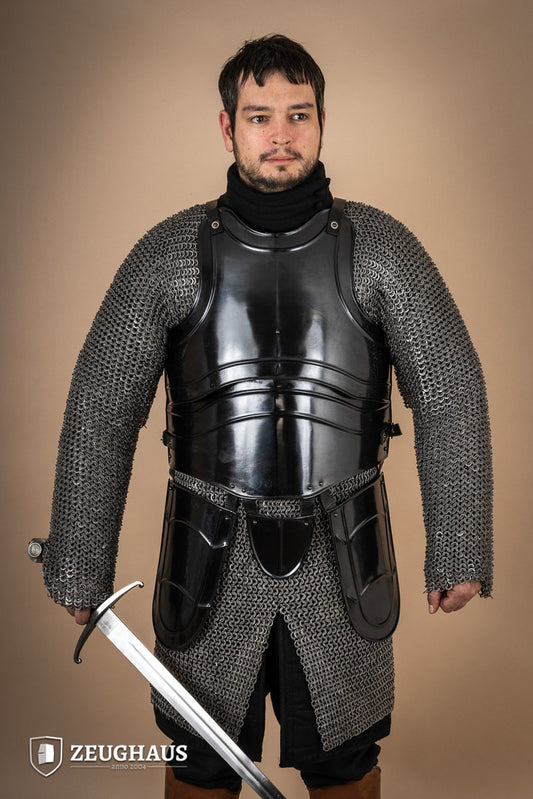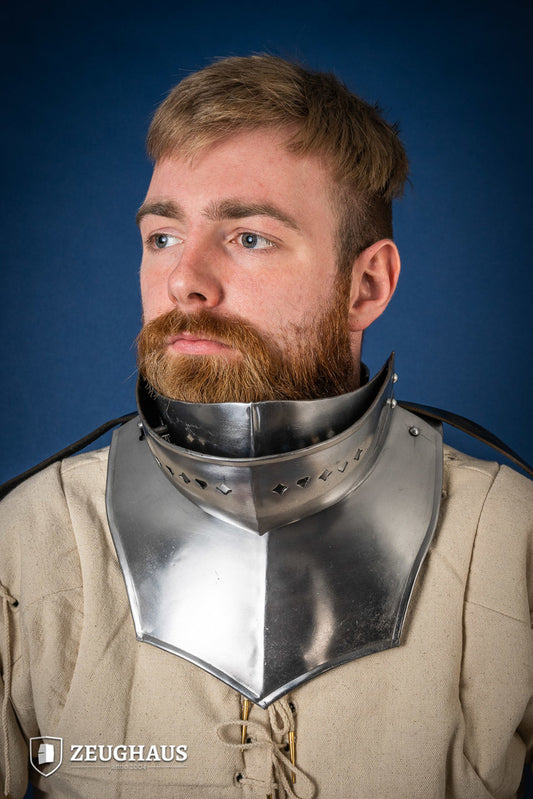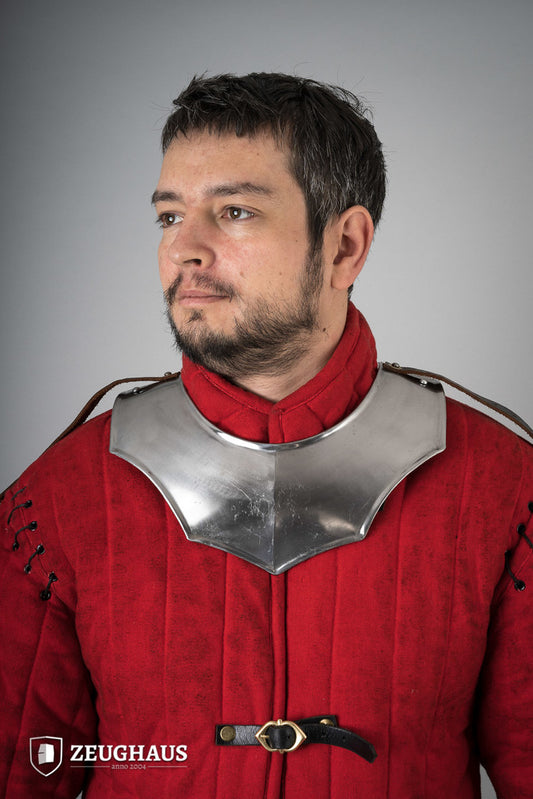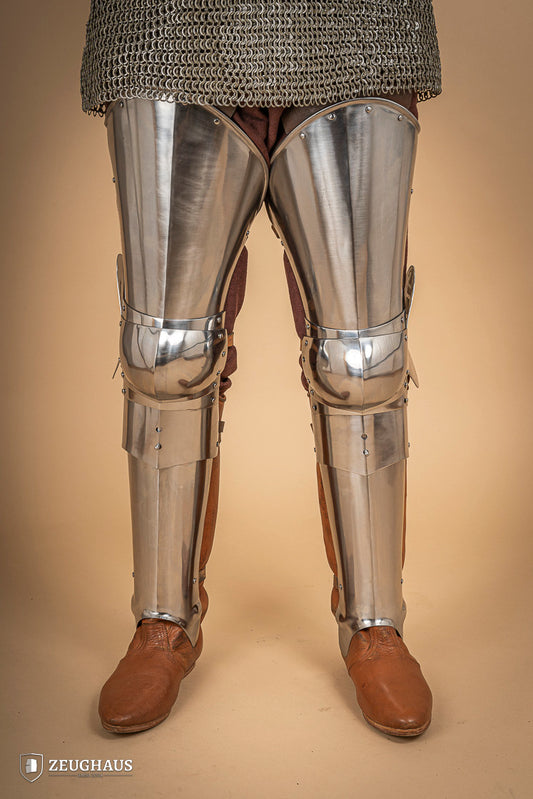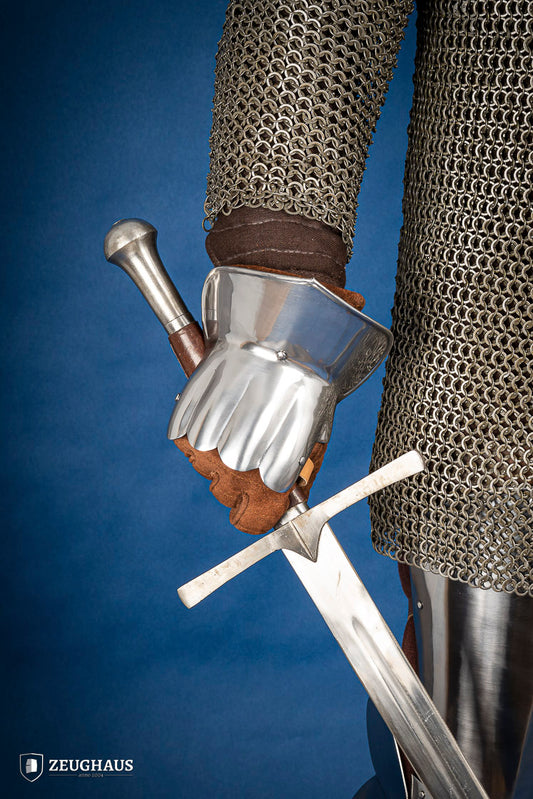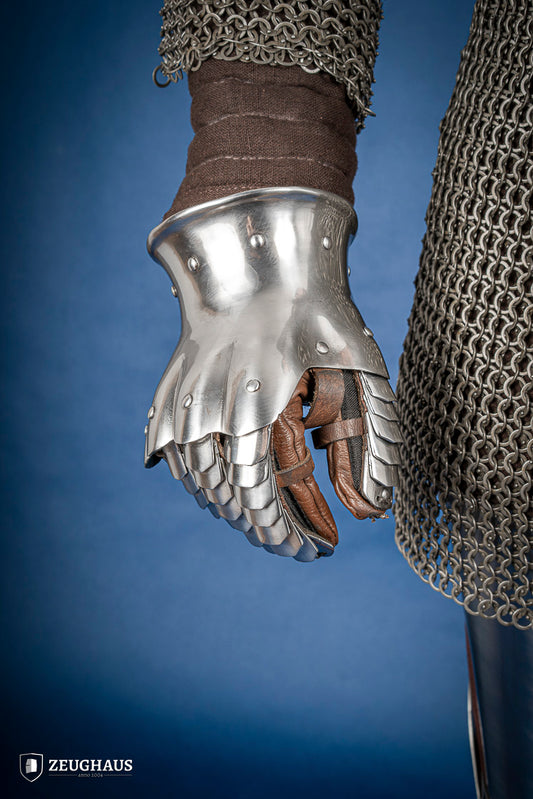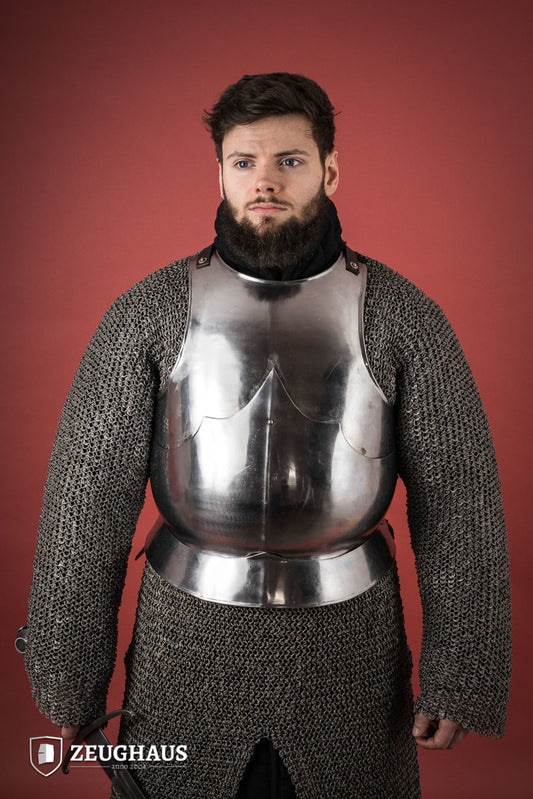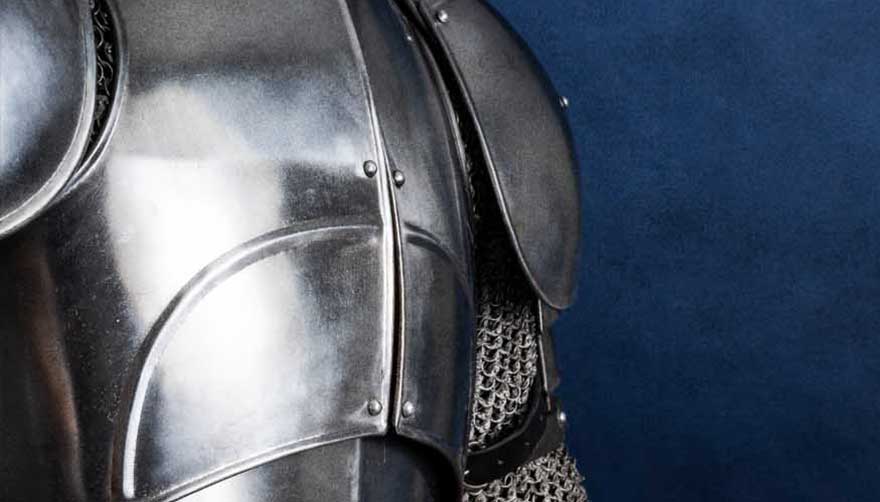The armour maketh the knight. Even as armaments and equipment used by knights changed over the centuries, the image of a gallant knight on horseback, clad in shining armour, still springs to mind when we think of the Middle Ages. Even modern knights in LARP and reenactments would not forsake the benefits of having a full set of armour.
Armour
Despite all the romantic notions that we associate with the Middle Ages today thanks to literature and film, this epoch of human history was, above all, a time of warlike conflicts. According to current historians, there were more than 100 historically relevant wars between the beginning of the early Middle Ages, around 500 AD, and the end of the early Renaissance, around 1500 AD, in which competing troops met each other in several battles.
At the time, wielding swords against the declared enemy was the preferred means of asserting one’s claim to power and defending it against competition. Additionally, the law of the strongest typically applied. This means that rather than hiring a lawyer, anyone who could not base their claims on divine law, and for example got into a dispute with the ruler of a nearby principality, would typically be forced to let their weapons do the talking. This often led to feuds that lasted for generations and typically resulted in warlike disputes where right and wrong were equated with life and death.
Against this backdrop, the Middle Ages are one of the most historically exciting and interesting periods of military history, characterized by the image of the honorable and defensive knight in shining armour.
With God at Your side and the Armourer at Your Back
During the Middle Ages, when the European knight charged into battle, he did so with the conviction that he was fighting for a just cause and that, as a good Christian and defender of the faith, he could be sure of divine support. In his eyes, victory and defeat were ultimately decided by divine providence alone. Of course, knights were still not so reckless as not to contribute to their own success within the framework of their own very worldly possibilities.
All in all, battles during the Middle Ages were characterized by man-to-man combat. Even though military and weapon technology as well as strategy and tactics were increasingly improved over the centuries, hostile troops still mostly faced each other on the battlefield and primarily fought with hard, sharp steel. If a soldier or knight died in the field, blows, cuts, and stabs were usually the identifiable causes of death.
Even though people in the Middle Ages lacked today’s knowledge of the human body, they were well aware of the damage that contemporary weapons could cause and how limited the possibilities were to successfully treat serious injuries.
Constantly improving one's skills in handling weapons was only one measure to reduce the risk of injury. Knights as well as mercenaries were highly specialized fighters, who for their time may well be compared to present-day military special units. Armour technology is the second important means to assert oneself in battle while protecting one’s own life and health.
Reliably Upgraded
Even before the Middle Ages, soldiers have been fighting with weapons of different classes. Essentially, four types of weapons can be distinguished:
- - Cold Weapons
- - Polearms
- - Blunt Instruments
- - Ranged Weapons
Daggers, swords, spears, lances, axes, maces, slings, bows, or crossbows? Weaponsmiths have increasingly perfected the art of war over the centuries and developed weapons that could kill or at least seriously injure with a single stroke.
Parallel to the development of weapons, armour technology also evolved. Simple textile clothing of the time offered little protection against such weapons. Even a slight cut, let alone a thrust or a blow, could incapacitate a person or cause injuries that could mean death after the battle was over.
The task of armour was to protect its wearer from the attacks of the enemy’s weapon. As a second steel skin, it was intended to intercept and deflect cuts and stabs as well as dampen the force of a blow.
The basis for developing effective armour was metalworking, which became increasingly important and methodically perfected during the Middle Ages. Textiles and leather, which were still used as armour material by simple foot soldiers at the time, provided very limited protection, were easily cut or punctured and offered little resistance to blunt blows.
Metal as the primary material proved to be significantly more effective. It reliably prevented cuts, intercepted projectiles, at least to a limited extent depending on their force, and in some cases even deflected them on impact, while the force of a blow could be softened and compensated for by deformation.
Armour protected all parts of the body that could be affected by weapon hits, i.e. the entire body: the torso, shoulders, arms, legs, hands, and feet. Assembled from individual parts, solid metal armour offered complete protection, but largely preserved the freedom of movement and thus combat strength of its wearer.
The production of a classic knight's armour made of metal plates, to which it also owes the name plate armour, essentially began in the 13th century. Before that, wealthy fighters and nobles in the early Middle Ages wore chain mail, which was made with great effort and craftsmanship but did little to oppose modern weapons, such as the crossbow or longbow.
Massive metal plates, which were made individually with enormous effort to fit its wearer’s body shape and were expanded over time with more and more useful details, were superior to chain armour in terms of protection. In turn, plate armour was not only very expensive and thus, at least as full armour, reserved for the wealthy knight, it was above all enormously heavy and certainly anything but comfortable and easy to wear.
A full medieval armour set consisting of cuirass, plate shoulders, plate arms, and plate legs as well as plate gloves or plate mittens weighed between 30 and 50 kilograms. In addition, knights often wore chainmail, which by itself could weigh between 10 and 20 kilograms. Simply to put it on, the knight needed strength and energy, and required even more to connect the different parts. In full armour, with helmet and weapon, the knight was not very agile, certainly not a sprinter, and after a fall, he was rarely able to rise without help. For the most part, protection and comfort were naturally mutually exclusive.
Plate Armour in LARP, Show Combat, and Reenactment
To own plate armour is a long-cherished dream for many historical enthusiasts with a soft spot for the Middle Ages. Whether it is about having a historically correct representation of a medieval knight in armour as part of a reenactment or basing your fantasy character in LARP on medieval models, you will find all kinds of plate armour with Zeughaus that can be worn individually, combined with other armour pieces or assembled to a complete set.
You don't have to worry about collapsing under the weight of the armour. Even though our armour parts are made of metal, and therefore have a certain weight, even a complete set of armour is not nearly as heavy as its historical model. Modern manufacturing methods allow us to offer the luxury of our own plate armour at prices that would have brought a medieval armourer to tears. Of course, show fighters have to at least take into account functional limitations: due to the material and production, our armour offers an authentic look, but not the protective effect of hand-forged armour from the Middle Ages.

